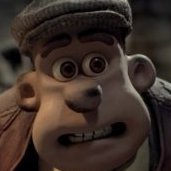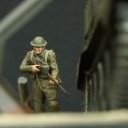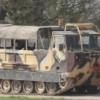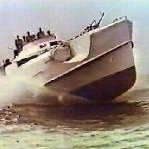-
Posts
199 -
Joined
-
Last visited
Profile Information
-
Gender
Male
-
Location
Loidis
Recent Profile Visitors
3,226 profile views
Lummox's Achievements

Established Member (3/9)
1.2k
Reputation
-
Methinks I'm overdue an update. I can't believe it's two weeks since the last post - where on earth does the time go? First some belated responses to comments... Thanks Kristjan, it's very kind of you to say 👍 Cheers Nik. Brass and stuff is great, but I must admit I'm looking forward to toning down the bling with some nice unifying paint. Thanks Mr P. Hmmm, a voltage regulator you say <quickly opens search engine to find out what one of those is>. Cheers Keith, thanks for the info, and another vote for a voltage regulator. I agree with what you say about the challenges of replicating wiring to scale. I think our hobby is always a compromise between using materials that are over-scale (but workable), against true-scale (but unworkable). As long as it looks not too out of place it's close enough for me. Thanks Ned. A voltage regulator it is then! It's always nice to know what the bit'n'bobs you're working on actually are (although I'll not pretend to understand what they do). Cheers Jochen. As ever, thank you for all the additional info. I might have known you'd come up with the goods, though if you'd provided those links earlier I might have made a better job of the voltage regulator. Thanks Andrew, I'll try my best. 👍 Cheers Los. If I do get it running, I could do with trundling it over to your paint shop. Right, so what's been going on since the last update? Well, I've been working on something I think I can actually identify (gasp, no, surely not!) If I'm not very much mistaken we can see a klaxon: We also see examples of a double klaxon, which is what Trumpeter provide in their flak truck: We won't be greedy though, we'll just go for a single klaxon, so let's see what we can find. The spares box drew a blank, so I had to resort to the stash. Now generally I don't like raiding bits from unbuilt kits, but as luck would have it, I found a pair of klaxon faces in an update set for a Panzer II. Why there are two virtually identical faces is unknown (different klaxon manufacturers perhaps?), but the instructions suggest it's optional which one to use: Anyhoo, not one to look a gift horse in the mouth let's nab one for use in our truck. A bit of sprue for the klaxon body, some etch off-cuts for a bracket, some wire for a cable, and we end up with a klaxon. I thought I'd stuff the end of the cable into the firewall 'hole', because, hey, why not? Next, we circled back to where we started some time ago. Remember that lubrication pump that we talked about several posts back? No? Well here's a picture to jog your memory, along with a picture of the plunger thing in the cab that operates the pump: These awful pictures attempt to show the pump being spruced up with a nut on it's 'spout', and a massively over-scale 'T' junction made from soldered brass tube. The second picture is a representation of the cab plunger: The pump was then added, along with lead wire to represent the lubrication lines that traverse the firewall to termination points roughly in line with the leaf springs, or wheel hubs, or whatever else it may be that is actually being lubricated (the lines will stop there I'm afraid). Not forgetting the 'plunger' in the cab (which is not quite in the right place but I won't tell anyone if you don't!) And finally, to get away from all the unforgiving macro photography, let's have a couple of shots to give the firewall some context. Inevitably some of the detail ends up hidden (at least we know it's there), but generally the additional work brings to an area to life that would have been pretty featureless: And that brings things up to date. Cheers, and thanks for looking, Paul.
-
Beautiful work Kristjan, I love what you have done with the mufflers. Very clever, and very effective. 👍 Just a quick observation if I may... You've beaten-up the mufflers very realistically. Would the expectation be that the fenders also have some damage/dings to mirror the hard life of the mufflers? But there again, it would be such a crying shame to mangle those gorgeous fenders. Hmmm, it's a tough call. Paul.
- 29 replies
-
- 1
-

-
- Panzer III
- Dragon
-
(and 1 more)
Tagged with:
-

MiniArt 1/35 Austin Armoured Car 1918 Pattern
Lummox replied to robw_uk's topic in Work in Progress - Armour
Top work with the bonkers masking Rob. I reckon you deserve one of these... -
Well Easter is over, far too much lamb and chocolate has been consumed, the spare bedroom has been freed from visiting relatives and has reverted to a 'modelling studio', so I think it's now time for an update. But first some responses to welcome comments... Thanks Keith, you really are far too kind 👍 Cheers Mr P. You know, I think I agree with leaving the holes. Ah yes, the video of the Stammheim museum example. Thanks for nudging my memory Jochen - I knew I'd seen the 'hole effect' somewhere. Cheers Ned. I'm going to run with the holes I think. It's gives a bit of interest, and I'm sure the driver won't mind the odd rattle. Right, now for the update. This is going to be a bit of a waffle I'm afraid, the subject being the electrical 'connector box' type thing that is visible at the top right of the firewall: I'm starting to become a bit paranoid as to whether features in the engine bay of the handful of extant truck examples are period or not. Wartime pictures of the area are like hen's teeth so it's tricky to confirm whether the 'box' is post-war or otherwise. We do have a couple of pointers though. Firstly we have the new(ish) flak truck produced by Trumpeter. Downloading the instructions from Scalemates we see something that looks very much like our 'box' (we also see the lubrication pump thingy too discussed in earlier posts): The only other evidence I could find was this picture of fire-trucks (maybe?) based on the L4500 chassis. I don't profess to be an expert on uniforms, but the chaps look to be in wartime garb to me, and is that a hint of the 'box' we can see (if we use our imagination)? Persuading myself that the 'box' is wartime, lets have a look at it in more detail. There's four wires leading into the box from a rat's nest of wiring focused around what look to be 'choc block' type connectors. Wires into the 'choc blocks' appear to come from a hole in the firewall: The 'strengthening rib' pressing on the firewall appears to flip from concave to convex just prior to the hole where the wires pass through: So what's inside the cab where the wires pass through the firewall? The hole looks to coincide with a bank of connectors inside the cab below the dashboard. In the second image I reckon we can see the wiring passing through the hole in the firewall: OK, there seems to be some kind of sense to the wiring, so let's see what we can do to replicate it. The flipping of the strengthening rib from concave to convex was a bit beyond my skill set, so instead I used a blocked off piece of brass tubing to replicate the 'hole'. A mix of lead wire of 0.3 and 0.2 mm diameter was threaded through pre-drilled squares to replicate the 'choc blocks'. It's all rather simplified, and in retrospect I should probably have used finer 'wires', but we are where we are: Macro photography is a harsh mistress, but panning out a bit it doesn't look too bad. It gives an impression of 'business' which hopefully will look OK under a coat of paint: That's it for now. Apologies for the ramble, cheers, and thanks for looking, Paul.
-
I've been blown away by all the comments, thank you. I thought it best to respond now rather than wait for the next update... Cheers Mr P. Some kind of riveted 'padding' strip seems evident now that it's been pointed out. Strange the things you miss that are blindingly obvious. 🤪 Thanks Tiger. I guess the bonnet panels would make an infernal din without the deadening strip. The strip took a couple of attempts. The first try had the holes pre-drilled, but this caused uneven bending of the strip (there being a 'notched' effect, presumably due to the plastic being weakened at the drilled holes). Fixing the strip on the firewall first and then drilling the holes in situ ended up being the way to go. Not too hard a job really, just needed some careful measuring and a high quality drill bit. Talking of which, these bits from Tamiya take some beating. Expensive, but worth it IMHO. The wider shank makes such a difference in accuracy, and reduces breakages no end: Cheers Roger - much appreciated 👍 Now that's a thought Echen, I'd love to have one of these in the back garden to tinker with. 👍 Thanks, but stop it now Mr P Oy, you can stop it too Cheers, Kristjan. I wasn't planning on adding the bolt heads to the flanges, but you've shamed me into doing it now I used the second smallest bolts from this etch set by Aber (they are slightly too large but the smallest bolts were too small). I'm afraid I'm not adding bolts to the flange in the cab as access is far too limited 🤪 Oh bother Jochen, I thought things were going far too well. Although not strictly accurate, the holes are meant to 'suggest' the pop rivet heads. How was I to know that the Germans were late to the party and didn't start using them 'till after the war? Sheesh! I suppose that means I'll have to do something about the radiator housing too as I pulled the same trick there: OK, what to do? I don't think that filling the holes is an option. I could replace the strips (but don't have an appetite to do that truth be told). That leaves hiding the holes with something, so it was out with the masking tape and scalpel: Hmmmm, not sure what to make of that to be honest. Do you know, I may be a bad man, but I think I prefer the little holes. I'll ponder things for a while... Thanks Rob. It's a bit of a labour of love. I think it will be a while yet before the engine coughs into life Thanks again for all the comments, Paul.
-
Cheers Nik. There's no plans on this becoming a shelf queen, so I'll keep plugging away. When it will eventually be finished is another question though. Thanks Mr P. It's always a bit of a milestone when the primer unifies everything and the bling is banished! Cheers Keith. Lubrication pump MkII for the win I think 👍 Thanks Roger, and another vote for lubrication pump MkII (which is encouraging) 👍 Cheers Kristjan. I agree the pump isn't as exact a match as I'd have hoped for, but it's close enough if you squint a bit In an effort to keep things moving, I'll post a short update on work that's been taking place in the firewall area. Firstly, a job I hadn't been looking forward to, which was an attempt to replicate the strip that is evident around the firewall boundary. I assume the strip is there to secure the bonnet panels when they are in place, and/or perhaps to seal against water ingress into the engine area? Whatever, it is quite noticeable, so needed to be added. It's unclear whether the hanging off bit in the last picture is the strip itself or some kind of additional rubber seal: I pondered how best to replicate the strip, fleetingly considering brass strip, but opting for thin styrene strip for ease of bending/drilling/attaching. The task ending up being as awkward as I feared, especially the tight bends around the firewall corners. We got there in the end though. It's not perfect but I think it will look OK under a coat of paint: Next, was something that had been gnawing away at me more then it should, namely the circular flange thing around the steering column aperture. The kit doesn't represent this feature at all well, there instead being just a raggedy slot for the steering column to pass through: Hunting around the spares box I happened upon a piece of etch that fortunately fitted the bill nicely. I honestly cannot remember where the etch came from, but it was just about perfect for the job. The top of the slot was plugged and filled, and the etch flange fitted: So far, so good, the front of the firewall started to look the part. Unfortunately, the view from the inside of the cab told a different story, the raggedy slot with plug was on show for all the world to see. Hmmm, we'll have to do something about that, but what did the real cab look like in that area? Well, images of the area are few and far between. I found one tantalising glimpse of 'something' for the version of the truck we're modelling, and something clearer for a truck version where the cab dashboard was altered around somewhat. We seem to have something that mirrors with the flange on the front, but more substantial: OK, let's see what the spares box throws up for this. Panzer IV fans may well recognise the road-wheel (these I think being spares from a Tristar kit). The separate hub cover, once drilled, will be a close enough match for our purposes. A slosh of paint, some weathering, and hey presto, the slot is suitably camouflaged: Finally, a couple of shots with the steering column is place. You wouldn't believe how much of a faff it was to get the inside and outside flanges to play nice with the column. Definitely a situation where having an extra hand or two would have been jolly useful That's it for now. Cheers, and thanks for looking, Paul.
-
There's no hiding the reality that this build has stalled somewhat. No excuses really, the cold, hard fact is that I've been slacking. A tell tale sign is when you eventually rouse from your slumber to post an update, you start to think that the thread has disappeared into the ether, but then eventually you find in on page 5. 🤪 I do have some shocking news to report though. You may want to sit down for this. There has been paint OK, it's only a coat of primer, but paint is progress! Quite tricky to get into all the nooks and crannies truth be told, but we got there in the end (just about): While the AB was out some other stuff got a squirt too. The wheels have turned out OK after their butchering to replace the hubs: Meanwhile, I thought it would be remiss of me not to do something about that lubrication pump thingy seen you kind people took the trouble to identify for me. It's been a while, so here it is again to refresh your memory: Sketches were made, measurements were taken, dimensions were guessed, and eventually something that looked vaguely like the pump was scratched up: So far, so good, let's just check what it looks like in situ. That's not good - it's too big, fouling on the steering column and firewall support. 😞 Well, I say it's too big, but really the problem is that the space between the steering column and the support is too small. What's gone on there then? Part of the problem is that the firewall support I knocked up is probably positioned too far inboard (my bad). Not sure about the steering column location though either. Oh, bother: Hmmm, what to do? Well, the steering column is pretty much fixed in that location, and I didn't fancy moving the firewall support at this late stage, so the simplest compromise was to knock up a mini-me version of the lubrication pump. Hooray, the new pump now fits OK: Finally, a wider shot to see the pump in context: That's thing up to date. I really need to pull my socks up and get moving with this, so I'll be mentally cracking the whip (honest). Cheers, and thanks for looking, Paul.
-
Hi Jules. The build is on hold while I've been focusing on the truck that will be transporting the Maiale. There has been little progress I'm afraid, and certainly there has been no paint. I really need to stop faffing around and get on with things. Earlier posts in the blog use VillagePhotos for picture hosting, but they didn't renew their SSL certificate when it expired, which no doubt is the cause of the missing pictures. I suspect you'll be at the painting stage way before me, so perhaps I can gain some inspiration and motivation from your build Cheers, Paul.
- 57 replies
-
- S.L.C. Maiale
- Italeri
-
(and 1 more)
Tagged with:
-
Fantastic work Andrew!
-
I'm gobsmacked at the magnificent response from the good folk on here to what was basically a quite mundane and esoteric query. Many thanks to you all 👍 It does look like @Jochen Barett has once again come up with the goods (that handbook looks very interesting by the way), but also a special hat-tip to @Keeff who originally suggested a lubrication system. So mystery solved, but I'm now wondering what is being lubricated? Thanks again to everyone. Paul.
-

Willys Jeep - Lets see how this goes! *Finished*
Lummox replied to Keeff's topic in Work in Progress - Armour
Hmmm, that sounds interesting Keith. I've got a chassis to paint very shortly so I'm eager to see the end result. Crack on in your own time . Paul. -
Blimey, there's been lots of comments and suggestions (which is great). Rather than rudely waiting a month to reply which is my usual trick, I thought I'd respond more promptly for a change... Ah, OK, so the reservoir doesn't necessarily need to be that close to the brake pedal. Gotcha Mr P, thanks. And yes, a 'Haynes' would be rather nice (didn't see one in The Works last time I was in ). Cheers Nik, and yes there looks to be two lines coming from the reservoir, possibly to the brakes, but then again... Thanks Keith. Yes, two lines, maybe for a lubrication system? Hmmmmm.... Sorry if I'm being a bit slow, but is it the mechanical linkage for the brake that is leading you to rule out the master cylinder theory Jochen? There certainly are examples of vehicles that don't exhibit the mystery reservoir 'thing', so it doesn't seem to be a 'must have'. What can I say my friend, apart from 'thank you'. I certainly owe you a stein or two. Coincidentally once of the images you show is I think the Stammheim L4500 before restoration (the following being 'before' and 'after' shots). Given that their vehicle doesn't seem to have the 'thing' I'm not sure if they would be able to help, but you never know : The museum certainly would be worth a visit as it looks to be packed with interesting stuff. No sign of our L4500 though, which is a shame. Cheers Ed. The resin head certainly makes a difference. Just hope my paint job will do it justice. Thanks Filippo. The figure is the one on the left in this set by MiniArt (it needed quite a bit of cleanup but turned out OK). The replacement resin head was one in this set by Hornet: And finally I stumbled across this which shows a running example of the truck with the mystery 'thing' evident: Cheers, thanks for looking, and thanks for all the input (which is much appreciated), Paul.
-
Shamefully my laxness has continued into the new year. I'm way overdue an update. I really will have to knuckle down and get on with the job, but it's been so long I'm struggling to recall what the job was! Ah yes, I remember now, I was rambling on about a mystery object on the firewall... It does look rather like a master cylinder of some kind doesn't it Jochen? It's position seems to be wrong for the brake system to me, as I'll try to explain later. Thanks Keith, and another vote for a brake master cylinder. Not sure about its location though (but I'll freely admit to not knowing a great deal about these things). Ha, Nik (there's always one isn't there) Hello stranger, good to see you're still alive and kicking Mr P. You did well to dig this thread from the depths (must have been languishing on page 7 or something) Right, on with the update. Firstly, let's revisit that picture showing the mystery object on the firewall, with added annotation to explain my thinking. We can see the protrusion for the footwell where the clutch, brake and throttle pedals are situated, The mystery master cylinder is some distance away from where the brake pedal would be (although interestingly there is something else that looks like a master cylinder where the clutch pedal would be, which makes sense I guess). Note the highlighted stiffening rib which we'll use as a reference in the next pictures: Now let's look inside the cab (I think these pictures are from the same vehicle). We see the footwell with the various pedals, but interestingly if we follow the reference stiffening rib we we see 'something' which looks to correspond with the location of mystery master cylinder. I don't have a clue what this may be to be honest. It doesn't look like a foot pedal, more something that may be pushed/pulled (though a bit of a reach for the driver I'd have thought)? Unsure whether the red has any significance (a button perhaps)? Wondering if this was an oddity to a specific vehicle, I has a poke around and found other (similar, but different) examples: So the mystery deepens. We now have an unknown master cylinder thing on the firewall and a seemingly corresponding unknown lever thing in the cab. I'm curious as to what purpose these may serve, so would welcome any thoughts/ideas/guesses from you clever people. Preempting any suggestion that @NIK122 may have, I don't think it's a bonnet release lever Right, on with the build. Not much has gone on to be perfectly honest, but I thought it's time to stop faffing about and get final things added to the chassis before sloshing some paint around. Naturally this meant that we should rip something from the chassis that has been previously added. Do you see that mid-section of the exhaust system that was added some time ago? It's going to awkward painting that isn't it with it twisting and turning around the chassis? So off it came, pins being added to the attachment points to allow it to be 'push fit' added after painting. The exhaust system is now totally separate which should simplify painting no end: Things have been added to the chassis though, starting with the width indicators created some time ago: ...and the rear light cluster things. Whether these extreme sticky out bits will survive the work to come is another question. Time will tell 🤞: Finally, Kev has seen some progress in that he's got a new head. The kit head isn't too bad, but a resin replacement (from Hornet in this case) is always going to be an improvement: When replacing heads I find the trickiest part is getting the orientation correct (so that the head fits the pose of the figure). To help with the orientation the kit head is tacked in place (the fit wasn't great as can be seen) and some major trepanning undertaken to drill through following the plane of the head. A pin in the replacement head then naturally follows the kit head orientation. The neck area is then excavated, thinning the collar as much we dare: Now Kev has a new head (removable for painting): That's things up to date. Cheers, and thanks for looking, Paul.
-
- 42 replies
-
Dug these out of the archive which may or may not be of interest. The last picture is my personal favorite










